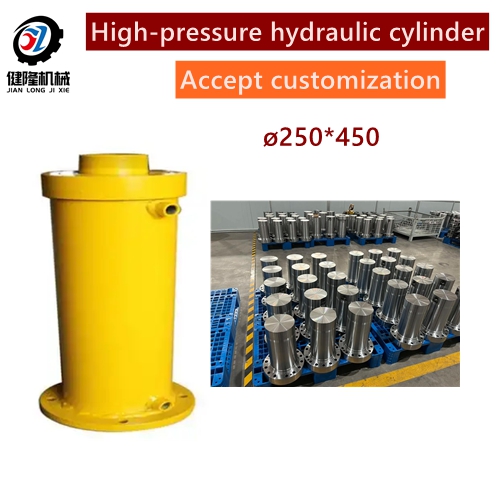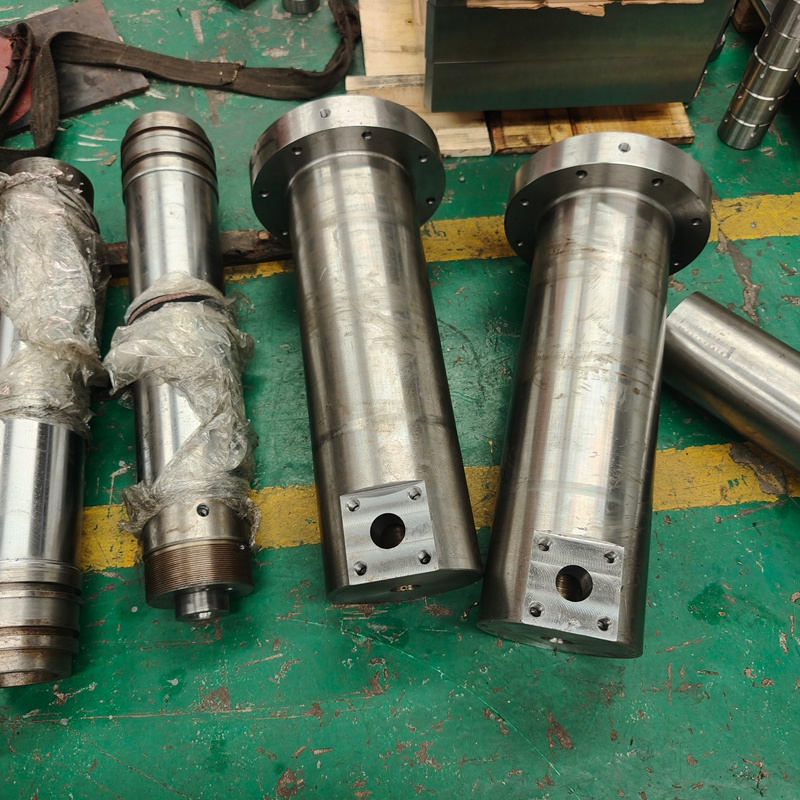Hydraulic cylinders have various structural forms and classification methods. They can be divided according to the mode of action, structural form, installation method, etc. Below, Jianlong Hydraulic Technology Group will briefly introduce these aspects:

1. Classification by mode of action
1.1 Single-acting hydraulic cylinder: that is, hydraulic oil enters only from one side to push the piston to move in one direction; the return stroke relies on external force (such as spring, gravity or load). Its advantages are simple structure and low cost; it is mainly used in dump truck lifting, hydraulic clamps, small stamping equipment, etc.
1.2 Double-acting hydraulic cylinder, that is, hydraulic oil can alternately enter both sides of the piston to achieve bidirectional push-pull movement. Its advantages are bidirectional controllable, stable output force, and wide application. It is mainly used in excavator booms, injection molding machine clamping devices, industrial robotic arms, etc.
2. Classification by structural form
2.1 Piston hydraulic cylinder
2.1.1 Single piston rod cylinder: There is a rod on one side of the piston, and the bidirectional movement speed and output are not equal (the rodless chamber has a greater output).
2.1.2 Double piston rod cylinder: There are rods on both sides of the piston, and the two-way movement is symmetrical (the speed and output are the same), which is used for precision equipment (such as grinders).
2.2 Plunger hydraulic cylinder: There is no piston, and the force is transmitted only by the plunger. It is a single-acting design and requires external return.
2.3 Telescopic hydraulic cylinder (multi-stage cylinder): It is composed of multiple nested cylinder barrels, which are gradually expanded when extended and compact when retracted; the stroke is long and the retracted length is short. It is used for crane booms, fire ladders, dump trucks, etc.
2.4 Swing hydraulic cylinder (rotating cylinder): The output shaft rotates (usually ≤360°), which is divided into blade type and spiral type. It is used for engineering machinery steering, robot joints, ship steering gears, etc.
3. Classification by installation method
3.1 Flange installation: That is, the flange at the end of the cylinder body is fixed, with strong bending moment resistance, and is used for heavy machinery (such as presses), etc.
3.2 Earring installation: That is, earrings are provided at both ends and can swing; used for excavator buckets, suspension systems, etc.
3.3 Tripod installation: the bottom of the cylinder is fixed with a tripod, which is simple and stable; used for hydraulic lifting platforms, etc.
3.4 Pin installation: that is, through pin articulation, it can adapt to multi-directional forces; used for agricultural machinery, engineering equipment, etc.
4. Special types of hydraulic cylinders
4.1 Series hydraulic cylinders: multiple cylinders are connected in series to increase the output force (such as large-tonnage presses).
4.2 Booster cylinder: use area difference to achieve local high pressure, used in small stroke and high pressure scenarios.
4.3 Servo hydraulic cylinder: integrated displacement/force sensor, high-precision closed-loop control (such as aerospace).

The classification and selection of hydraulic cylinders need to be combined with specific working conditions to balance performance, cost and reliability. For more hydraulic cylinder knowledge sharing/suggestions or the need to purchase high-quality hydraulic presses, please feel free to tell us (you can scan the following whatsapp QR code), Jianlong Hydraulic Technology will provide you with personalized, customized professional solutions and serve you wholeheartedly.

Contact: Miss.Li
Phone: 18822971180
Tel: 86-18822971180
Email: lifuyan78@gmail.com
Add: Guangyi Industrial Park, No. 2, Tanglip Jinfu West Road, Liaobu Town, Dongguan City, China
We chat
